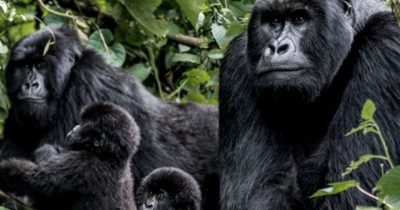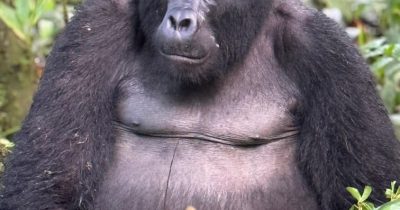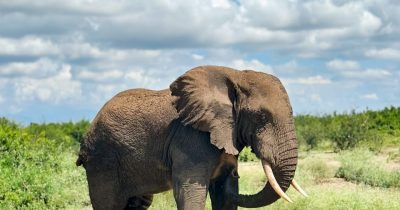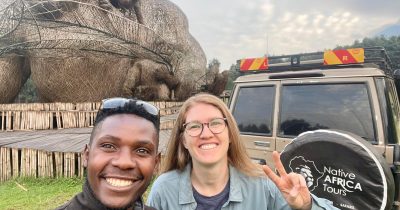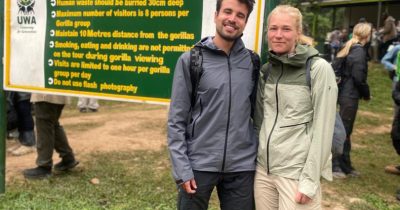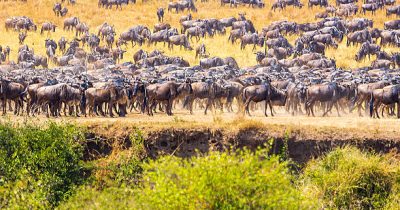Difference Between Gorilla Trekking and Gorilla Habituation
What is the difference between gorilla trekking and gorilla habituation? Gorilla trekking and gorilla habituation are the only two essential options for any primate enthusiast to enjoy an intimate encounter with the rare mountain gorillas in the natural environment. Although the two primate adventures offer a distinct opportunity for tourists to encounter gorillas in the wild, they slightly differ in one way or another. Here are some of the differences between normal gorilla trekking and gorilla habituation;

Gorilla trekking is usually a shorter and normal experience that involves tourists hiking through the natural rainforest to explore already habituated gorilla groups. During the usual gorilla trek, visitors are given only an hour to encounter the gorillas and take their photos closely. Gorilla habituation takes slightly more extended hours, and visitors have up to 4 hours to spend with a family of mountain gorillas. Visitors usually visit the semi-habituated gorilla group with a team of researchers, conservationists, or trackers. Engaging in this adventure is not just about seeing gorillas, but also about learning. It allows visitors to witness how mountain gorillas are habituated, deeply understand gorilla behaviors and their social dynamics, and take pictures.
Duration
Gorilla trekking can run for about 2-6 hours, which involves walking through the forest to look for a family of gorillas that the park official assigns to you. The length of the trek usually differs and is determined by factors such as the fitness levels of trekkers or visitors, the gorilla group’s location, and the gorilla habitat’s general nature. Gorilla habituation takes longer hours of walking through the natural forest to search for gorillas. About 4 hours can be spent in the jungles trekking and observing the gorillas in their habitat.
Gorilla families to be visited
Normal gorilla families involve visiting already habituated mountain gorilla groups. The habituated gorilla families exist across all the popular gorilla safari destinations. In Uganda, over 24 habituated groups of mountain gorillas have undergone the complete habituation process, and tourists on Uganda gorilla tours can visit them. On the other hand, in Rwanda, about 13 fully habituated gorilla groups await you to explore in Volcanoes National Park. About 8 (eight) habituated groups in Congo can be visited in the Virunga National Park.
Visitor Group Size per Gorilla Family
During the normal gorilla trek, a maximum of eight (8) guests can visit a single habituated gorilla group. During the gorilla habituation experience, a maximum of four visitors are allowed to visit a gorilla group. The gorilla habituation experience is only conducted on a gorilla family that is not yet used to human presence. It is the initiation stage for these apes to get used to human presence before they are fully opened to actual gorilla trekking.
Cost/prices
Both gorilla trekking and gorilla habituation can be conducted when you have a valid gorilla permit. Each gorilla trekking permit can be booked at USD 800 per person for foreign non-residents and USD 700 per visitor who is a foreign resident. Category of visitors that fall under the Rest of Africa can obtain a gorilla trekking permit at USD 500. The East African citizens –Ugandans included- can secure a permit at UGX 300,000 per person. Note: obtaining gorilla permits is safer and faster through local experts. It’s important to note that these prices are subject to change, and booking your permits well in advance is advisable to secure your spot.
If you intend to visit Rwanda, valid gorilla permits can be obtained for USD 1500 per person. The Congo gorilla permits cost USD 450 per trekker. All gorilla permits should be booked at least 2-6 months before the actual date of trekking, but they are open to reservation 1-2 years in advance. Visitors with plans to participate in gorilla habituation also require valid permits. Each permit for mountain gorilla habituation costs USD 1500 per person. Like gorilla trekking permits, mountain gorilla habituation permits are also valid for single visits (24 hours). Each permit allows you to visit one group of gorillas, and in case you desire to have say double trek or double habituation experience, then you have to secure two permits.
Where to engage in gorilla trekking & gorilla habituation?
Normal gorilla trekking tours are conducted at any of the 4 national parks. These include Bwindi Impenetrable National Park and Mgahinga Gorilla National Park, all found in Uganda –the Pearl of Africa. In Rwanda, there is Volcanoes National Park for you to explore during the gorilla trekking, and in the D.R. Congo, expect to visit the Virunga National Park. Unlike the regular gorilla treks, mountain gorilla habituation is strictly done in the Rushaga region, the Southern sector of Bwindi National Park.
Tips to have a successful gorilla trek and habituation
Like gorilla habituation, Gorilla trekking requires participants to be fit enough to realize a successful journey into the jungles to explore gorillas. These primate adventures are entirely different from the usual guided nature walks. Here, you embark on an actual trek through undefined trails in the natural rainforests. You can sometimes bump into muddy ground or slippery, steep slopes. Gorilla trekking mainly involves observing and taking pictures of gorillas in the wild. It takes a shorter period and is less immersive. Gorilla habituation is more comprehensive and engaging, as visitors have plenty of time to understand the behaviors of mountain gorillas in the wild.
Choose the right adventure
Choosing the right adventure is crucial to ensure you have the desired experience. If you prefer shorter treks and visiting already habituated gorilla groups, consider booking gorilla trekking. On the other hand, if you want quality time with the massive mountain gorillas in the jungles and a more comprehensive understanding of their behaviors, the mountain gorilla habituation experience is the right choice for you.
When to go for gorilla trekking and habituation
The dry season is, without a doubt, the best period for visitors to experience gorilla trekking and gorilla habituation. The dry seasons or months in most gorilla safari destinations occur from June to September, and another phase starts from December to February. Why the dry season? The dry months often receive low or no rain, with the gorilla habitat kept relatively drier, thus making it easier to search for gorillas in their natural environment. The two primate adventures are also open even during the wet or rainy months, but the challenge is that these are months when gorilla habitats record the heaviest rainfall. Two wet seasons are experienced in any destination, with the longest usually running from March to May, followed by the shorter rainy seasons/months beginning from October to November.
What to pack for your gorilla safari
Both gorilla trekking and habituation require you to pack right. This should be done starting with the essentials first. Among the essentials for your gorilla trek and habituation are waterproof hiking boots, a good camera that should be flashlight-free, long-sleeved shirts, long pants, valid gorilla permits, and a waterproof daypack. A walking stick –the poles for trekking can be found at the park offices, or request one at the lodge. You also need a rain jacket, gardening gloves, enough energy-giving snacks, adequate drinking water, insect repellents, a first aid kit, toiletries, and many more.
Rules & regulations to observe
- A maximum distance of 7-8 meters should be maintained during the actual gorilla trek or gorilla habituation
- Respect the maximum group size set for visiting each gorilla family
- No one can be allowed to visit gorillas if he or she is ill/sick
- Only persons above 15 years can engage in the trek to see gorillas or the gorilla habituation experience

